Infantile Spasms are a rare but extremely serious type of seizure which approximately occur in 1 of every 2,000 children. If undiagnosed and untreated, Infantile spasms can cause catastrophic, permanent damage to a child’s developing brain. It is extremely important that new parents are aware of Infantile Spasms as acting quickly is crucial to preventing serious long-term impacts. Worldwide, it is estimated that a child is diagnosed with Infantile Spasms every 12 minutes. Infantile Spasms are also known as Infantile Epileptic Spasms Syndorm (IESS) and were previously known as West Syndrome.
Please take the time to read this page, learn more and how to STOP Infantile Spasms.
How do these seizures present?
The seizures include repetitive but often subtle movements – including jerking of the mid-section, dropping of the head, raising of the arms or wide-eyed blinks. Infantile spasms can often be overlooked or misdiagnosed for other conditions, including colic, reflux, or a startle reflex
The videos below provide further insight on how these types of seizures can present while you can also find direct personal testimonies from families on their experience of Infantile spasms by visiting the links below
- Read Danika's story on our website
- Read Harry's story on our website
- Read Noel's story on our website
- Read Theo's story on our website
- Read Ben's story on our website
When are Infantile Spasms most likely to present?
Research suggests that the onset of Infantile Spasms peak at between 4 & 6 months of age although these seizures can begin at any time in the child’s first two years.
What causes Infantile Spasms?
The development of Infantile Spasms can have many different causes such as a structural problem in the development of the brain; metabolic conditions or genetic abnormalities. However, in many children, a cause can not be found.
What do I do if I suspect my child is experiencing Infantile Spasms?
If you suspect your child may be showing signs of Infantile Spasms, it is critical to remember that Infantile Spasms are a medical emergency – inform your medical team immediately.
Early diagnosis and treatment promote better health outcomes and reduce the risks of poor outcomes which can include developmental problems, autism and continued seizures.
It is crucial that you record incidences of suspected Infantile spasms on your phone to show your Healthcare Professional as this can provide them with key insights on what your child is potentially experiencing.
Remember the key word of STOP if you think your child is experiencing Infantile Spasms.
See the Signs
Take a video
Obtain diagnosis
Prioritise treatment
How are the Spasms treated?
The goal of treatment is to stop the seizures which could harm the infant's developing brain. Commonly, the initial treatment for Infantile Spasms is either a hormone called ACTH, or a steroid called prednisolone, with an anti-seizure medication Vigabatrin (Sabril). If this combination is not effective at controlling the spasms other medications may be considered such as Sodium Valporate (Epilim), Nitrazepam (Mogadon), Levetiracetam (Keppra), Zonisamide (Zonegran) and Topiramate (Topamax). Dietary therapy such as the Ketogenic Diet may be recommended also. Emergency medication is not typically needed for treating the spasms. Surgery may benefit some children with a focal lesion that may be operable. Others may benefit from the implantation of the Vagus Nerve Stimulator device (VNS) to reduce seizures.
What are the outcomes for children diagnosed with Infantile Spasms?
Outcomes can vary dependent on the promptness of identifying the Spamss and prioritising treatment. Developmental delay including slowing or regression is a feature of IESS while spasms are ongoing.
Most children will have their spasms controlled with medication. Many children will develop other epilepsy types or syndromes as they age, in particular Lennox Gastaut Syndrome. For some children the medications may lose effectiveness and spasms may return then or after the medication has been stopped.
Global delays across learning and development as well as specific learning and developmental difficulties can be an impact of the spasms for most of the children, which is why it is so important to have an early diagnosis and to start treatment early, to enhance the outcome for each child.
A small number of children with no underlying conditions and with prompt treatment will stop having spasms altogether and will continue to do well in terms of cognitive development
Watch our video with Dr. Mary E. O'Regan from CHI Crumlin...
We sat down with Dr. Mary E. O'Regan, Consultant Paediatric Neurologist with a special interest in epilepsy to discuss some of the most common questions around Infantile Spasms. Be sure to watch the video below to hear more from an expert voice on Infantile Spasms.
Further Information & Support
Epilepsy Ireland are proud to be part of the Infantile Spasms Action Network – a group of organisations across the globe committed to raising awareness of Infantile Spasms. This page has been designed with the assistance of information available from the Infantile Spasms Network. For further information on Infantile Spams, visit the Infantile Spasms Action Network website.
You can also find further information on Infantile Spasms by visiting the website of our colleagues in the UK Infantile Spasms Trust, which has further information and resources. The UK Infantile Spasms Trust also run a private Facebook support group for parents of children who have been affected by Infantile Spasms. Their membership contains many Irish families and you can apply to join this group by visiting Facebook.
Further information on Anti-Seizure Medications, the Ketogenic Diet and Vagus Nerve Stimulation can be found by visiting the 'Treatment' section of our website while there are other useful resources throughout our 'Epilepsy Information' section.
If you need any information or support regarding epilepsy, contact your local Community Resource Officer - you can find their details by visiting the 'Our Local Service' section of our website.
